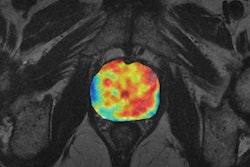Using the radiopharmaceutical flutemetamol with PET imaging works equally as well as analyzing samples of cerebrospinal fluid (CSF) to accurately identify early-stage Alzheimer's disease, according to a study published online on 9 September in Neurology.
Researchers from Lund University in Sweden released their findings from the BioFINDER study in which amyloid PET imaging with flutemetamol (Vizamyl, GE Healthcare) and CSF biomarkers matched performance in detecting beta-amyloid deposits in the brain, which is a precursor to dementia and Alzheimer's. The study also found no improvement when both imaging techniques were combined.
Flutemetamol is indicated for PET imaging of beta-amyloid neuritic plaque density in the brains of adult patients with cognitive impairment who are being evaluated for Alzheimer's disease and other causes of cognitive impairment. The PET tracer was recently approved for use in Sweden.
In this study, lead researchers Dr. Sebastian Palmqvist and colleagues analyzed nine brain regions of 122 healthy elderly participants and 34 patients with mild cognitive impairment who developed Alzheimer's disease within three years. The process later was repeated in an American group of 210 individuals.
Both the CSF sample and the amyloid-PET scans identified approximately 90% of patients who later would be diagnosed with Alzheimer's. Given the similar results, researchers stated the choice of which imaging method to use can be based on cost, expertise, or patient preference.


















